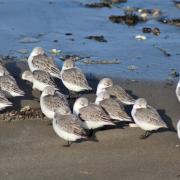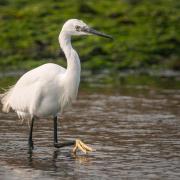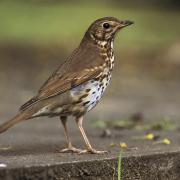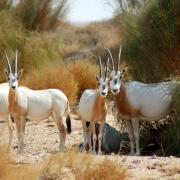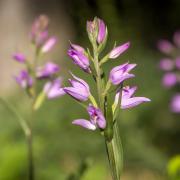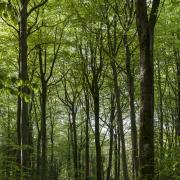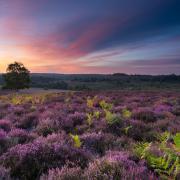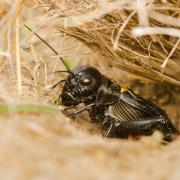The sight of blue butterflies flitting across the Hampshire chalk downland is the epitome of summer says Lianne de Mello
Among our Hampshire butterflies, one key group best conjures up images of those hot days of high summer. On a south-facing downland slope, there’s nothing quite like the sight of bright blue butterflies skipping and chasing across the hillside. The large blue is a very rare beast, only found on a tiny handful of sites where it has been reintroduced, and the small blue flies earlier in the year, but the other five ‘blues’ are all on the wing in the summer holidays.
It’s on the grasslands like St Catherine’s Hill nature reserve near Winchester that the blues really come into their own. The familiar common blue, the large powder-blue chalk hill and the dazzlingly azure Adonis blue butterfly can be seen on the wing together, and in the best years on the best sites, the numbers really can be staggering.
However these stunning butterflies have been in decline, with some halving in numbers in as little as two decades. Not only does this threaten our food production - one out of every three mouthfuls of food that we eat depends on pollination taking place - but it also impacts upon other species, like the farmland birds that feed on these insects.
One of the main causes of the decline in the butterflies, bees and other pollinators in the UK is the way that landscapes have been managed over the past 50 years. 97% of wildflower meadows have disappeared and the use of pesticides has been introduced, making it increasing difficult for them to find the food and shelter that they need.
There are many things that we as individuals can do to help our pollinators, from planting nectar rich flowers to providing homes such as bug hotels. But, what we really need to do now is to work in a bigger more joined up way to ensure that these wonderful and essential species can thrive.
Keep an eye out for
• Common Blue: This is a small blue butterfly which flies throughout the summer between April and October. The most widespread of the blue butterflies, it is found in a variety of habitats including heathland, woodland rides, grassy meadows, parks and even large gardens.
• Chalkhill Blue: This butterfly is found on the chalk grasslands of southern England. The males are the more conspicuous as they fly searching for the more secretive females. The males are silvery blue with a dark brown/black border and a white fringe on the wings. The females are brown with a white fringe to the wings and a blue dusting near the body. They are one of the largest blue butterflies found in Britain.
• Large Blue: Despite its name, the Large Blue is actually a fairly small butterfly but the largest of our blues. Adults fly for a very short period from the end of June to the beginning of July. Always rare in the UK, it declined dramatically during the 20th century and became extinct in 1979. Small populations are now surviving in the south of England.
• Adonis Blue: The Adonis blue is the rarest of the blue butterflies in the UK. It’s found on sunny, south¬facing grassland rich in herbs. The Adonis Blue larvae have a symbiotic relationship with ants, who provide protection from predation in return for sweet secretions from the larvae’s ‘honey glands’.
Find out more about what you can do to protect butterflies, bees and other pollinators at: www.hiwwt.org.uk/protect-our-pollinators






